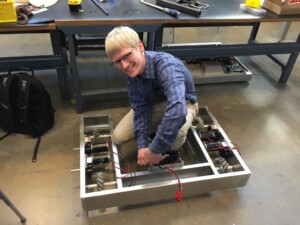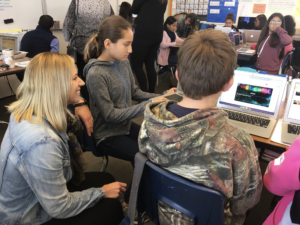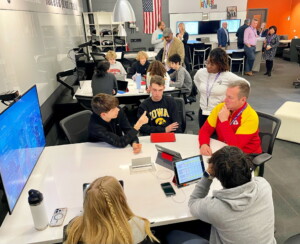How a Fun Mother-Daughter Project Became Two Groundbreaking Publications

By: Annette Bazira-Okafor
When my daughter Mbabazi and I started Black Girls Magazine (BGM) in our home, we thought it would be a fun project and an opportunity to learn about the media and representation within it. But then we ran 50 copies of our first issue to share with friends and family, which led to requests for subscriptions, and eventually we found ourselves publishing two bi-annual publications: one for kids 8–12, and a teen edition for those 13–17.
A lack of Black people represented in the media was an important motivator for us when we began, and it remains so today. For the most part, we’ve found people to be helpful and supportive of our magazine and our team of student journalists and editors. But there have also been some challenges as we’ve tried to create a magazine that makes everyone feel like they see people like themselves in the stories and images we put together.
Here’s a bit of what we’ve learned along the way. We hope it can help you ensure your student-produced publications represent everyone!
Why Representation Matters
Mbabazi and I have always spent a lot of time in the library. She would hang out in the kids’ section while I did my work, and we’d leave with a big stack of books to read together every time. It was so exciting for her to find a book with a Black kid in it, but they were few and far between. She read all the time, but it was almost always stories about what other kids could do, and only rarely about what someone who looks like her could do.
As she got older and became interested in things like makeup and nail polish, the lack of representation became even more apparent. For example, in magazine articles about how to do your nails, the hands in the pictures are almost always white. On the makeover apps they were playing with, the color suggestions were for white skin. The hair was all straight and didn’t include hairstyles for Black girls.
In one of our Christmas issues, we ran a story about how to paint your fingernails in festive patterns. After it came out, one of our teacher subscribers wrote us a letter about how excited one of her students was to see hands that looked like hers in a magazine tutorial. She said her student had never seen hands with dark skin in a magazine.
Seeing ourselves represented in the media makes people feel seen by society. It tells us we’re important and included within our communities, and it tells young people all the different ways they can participate in and contribute to the world around them.
Some our favorite examples of this include:
1. Diamond Daniel series by Nikki Grimes
2. The Sugar Plum series by Whoopi Goldberg
3. The Skin I’m In by Sharon G. Flake
4. The Broken Bike Boy and the Queen of 33rd Street by Sharon G. Flake
5. Ray Bearer by Jordan Ifueko
Including Underrepresented People in Everyday Stories
If a child pulls a book from the shelf in their classroom or school library, it probably isn’t about Black people unless it’s a history book talking about slavery or a contemporary book that’s explicitly political. That is a kind of representation, but what we really need are just normal stories with characters who just happen to be Black.
We want to see magazine stories about growing flowers with pictures of a Black gardener, or storybooks with Black families in them. I remember reading about a little girl who cried when she was given a book about a Black ballerina. She didn’t think that was what ballerinas looked like, because every ballerina she’d seen before was a white person. When Mbabazi was younger, I would sometimes take a black marker to the story books we read together and fill in the faces so she would have books about people like her.
And that’s all it takes. Just including underrepresented people in stories that have nothing to do with race is enough to send children the message that they are important, that interesting and exciting things can happen in their lives, that they, too, can grow beautiful flowers or meet daunting challenges and come out stronger for it.
Asking for Help to Represent Diversity
When we started BGM, Mbabazi and her friends were quite young, so I didn’t want to put photos of them in the magazine. Instead, we decided to make caricatures for each of them to include as author images, in staff bios, or as illustrations in stories they wrote.
Mbabazi took on responsibility for finding the right tool and began searching the internet for a free solution. What she settled on was a tool for creating comics called Pixton.
“It was very versatile,” Mbabazi said. “You could do things like change the eye spacing or the length of a person’s face. There were a few Black hairstyles, like afros or braids. The options weren’t extensive, but it gave me a lot more to work with than any other app I’d tried to make Black characters in.”
After we began publishing, someone at Pixton saw us on a news program and recognized that we were making some images with their software. Jared Shaw, the head of product at Pixton, called me up to ask how it was working for us and if there was anything they could do to help. I told him, “My daughter keeps saying, ‘I need more Black hairstyles.’”
“We started emailing back and forth and he asked me to compile a bunch of Black hairstyles I’d like to see included, and clothes, too, not just for Black people, but that all kinds of kids are wearing today,” Mbabazi explained. “I sent him a bunch of pictures I found on Google Images of cornrows and dreadlocks and different hairstyles we see on Black people, and he sent back a bunch of prototype drawings for me to pick from. They added them to the app and it was a big step up from the choices available when we started.”
Telling Stories from Black Girls’ Perspective
Right away, people wanted to help these kids who were making BGM. Early on, we were having meetings at the local library, where there was a writer in residence. I told him what we were doing and asked if he could talk to the girls about writing. He agreed, but then the next time we came to meet at the library, he had told the staff about us and they had set up a little space just for our meetings, with snacks and drinks for the kids. They asked us if they could buy a subscription when we ran our first issue.
And it wasn’t just the libraries and the schools. After our second issue, we had media requests back-to-back. Everyone wanted to talk to the girls about what they were doing. They received a bunch of awards and were even invited on International Women’s Day to the Legislative Assembly of Ontario, where they were recognized and given a standing ovation. That recognition really helped them to see that they were making a difference and doing something other people recognized as important.
It’s also opened so many great learning experiences and opportunities for them. They’ve been able to interview high-level politicians, like the Canadian Ministers of Education, Science, and Immigration. When you’re a journalist, nailing that interview can be as simple as sending a letter asking for some time. When I wrote Google and asked if the staff could visit their offices in Toronto, they gave a whole coding class with snacks and drinks, and a tour of the Google office. When I contacted the Canadian Space Agency ahead of a trip to Montreal to request a tour, they said, “Well, we’re not open to the public, but you guys are journalists. We’d love to show you around our facilities.”
To parents and students who may not see themselves in the media, I would say this: Don’t be afraid to ask people in powerful or interesting jobs for help. So many of them are excited to help. More importantly, it puts kids in a position to tell stories from their own perspectives and lets them know they’re the kinds of people who can make a difference in the world.
Stories help them understand how to be in the world, especially when they’re growing up and learning to understand our places in it. Every child deserves the opportunity to identify with heroes or regular people doing amazing—or even just fun things.
For more, see:
- Camp C-Block Introduces Blockchain Technology to Black Girls
- Black Girls CODE Building Tech Exploration Lab in New York
- Empowering Girls to Become Future STEM Stars
Annette Bazira-Okafor is co-founder, with her daughter Mbabazi Okafor, of Black Girls Magazine. She can be reached at [email protected].
Stay in-the-know with innovations in learning by signing up for the weekly Smart Update.







0 Comments
Leave a Comment
Your email address will not be published. All fields are required.